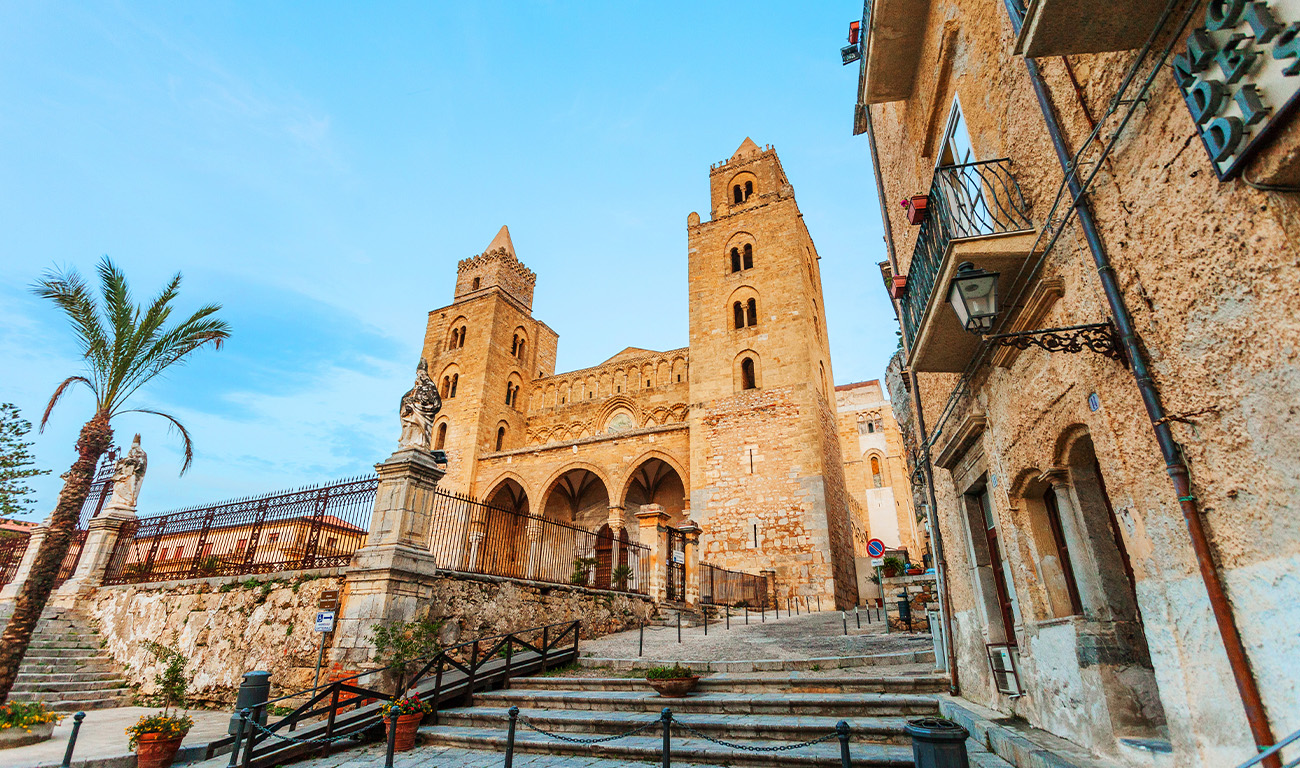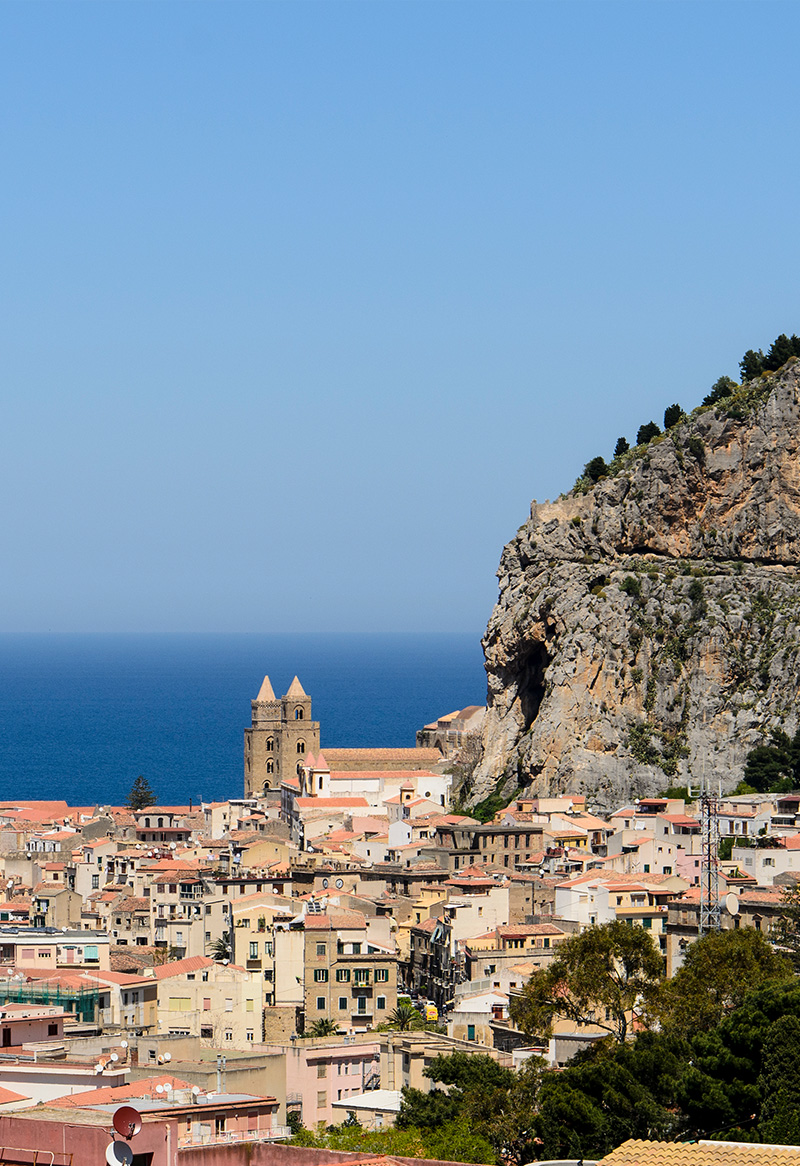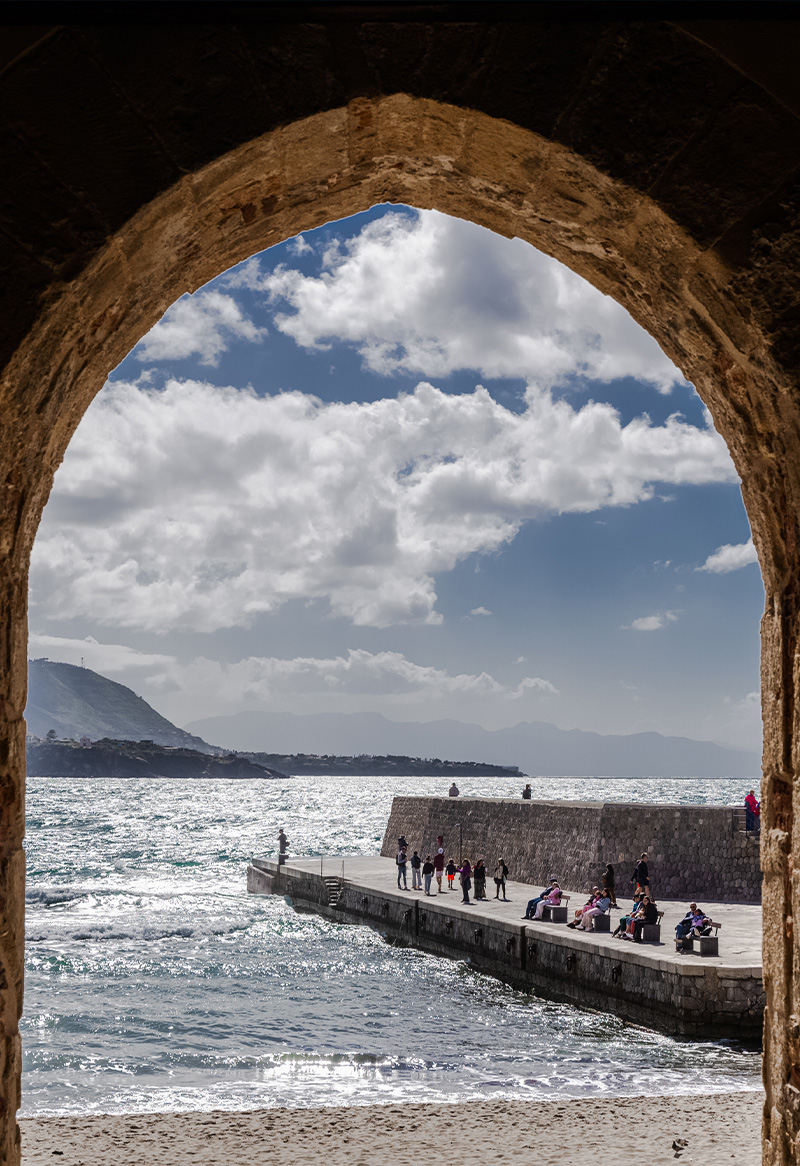
The Cathedral of Cefalù: a UNESCO World Heritage Site
If you take the main street of Cefalù, that is Corso Ruggero, you will arrive at the town hall square, overlooked by the renowned Cathedral of Cefalù, a real jewel of Arab-Norman art registered as a UNESCO heritage since 2015 and part of the Arab-Norman itinerary.
The Cathedral is called the “Cathedral of the Transfiguration“, and represents a true melting pot of the different cultures that coexisted in Cefalù throughout history. The Byzantines are responsible for many of the interior decorations and mosaics, the Arabs for the style of the glassless windows typical of Arab kasbahs, while the vertical slits in the walls are due to the Normans.
Outside, the church shows its medieval origin with turrets embellished with Guelph and Ghibelline elements.
Walking along the aisles inside the Cathedral many well preserved works can be found; among them, the sculpture of the Madonna holding the Child in her arms made of marble by the Palermo artist Antonello Gagini, the stained glass windows decorated at the end of the twentieth century and various works such as the sarcophagus of the bishop of Cefalù. Finally, we arrive at the altar, which preserves the cathedral’s masterpiece: Christ Pantocrator, which stands out in the midst of bare furnishings, a symbol of the coexistence of the Orthodox and Catholic religions. In this mosaic, Christ remembers his dual nature (human and divine) with his right hand and shows a passage from the Bible with his left hand.
The visit of the cathedral is a stop not to be excluded for its countless beauties.
Adjacent to the church is the cloister enriched with medieval columns.
Opening time
The site can be visited every day at the following times:
Monday – Friday: 08:00 -12: 45 / 15:30 -17: 45
Saturday – Sunday: 08:00 -12: 45 / 15:30 -19: 30




